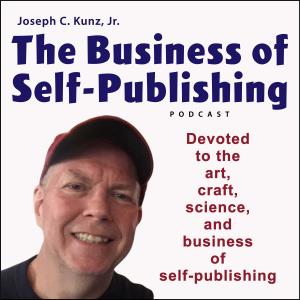The Business of Self-Publishing

Who Should Be Acknowledged in Your Book?
Updated February 9, 2023 Subtitle Recognizing and thanking those who helped you will help make your book more successful Synopsis The Acknowledgments is an excellent place to thank those who helped along the way to publishing your book. You should include those who had a meaningful impact on you and your book. Here is a list to help you get started. What You Will Learn 1. You will learn who you should thank for helping you. 2. You will learn who should be in the Acknowledgments. 3. You will learn how and why the Acknowledgements are an excellent place to connect emotionally with the reader. Introduction You have finally finished writing your non-fiction book, and now you want to thank those who helped you. At first glance, you might believe that writing the Acknowledgments will be the easiest section to write. But then you start thinking about it and quickly realize that quite a few people have helped you. Even if you are self-publishing your book, you are not entirely alone. As you will see in the list below, there is a vast range of people and companies you have received help from in one form or another. This list will help you remember who assisted in some way to help you publish your book. Who Should Be Acknowledged? Although you might start with a long list of names, you need to whittle it down to only those who directly helped you research, write, and produce your book. You should only include those who had a meaningful impact on you and your book. And anyone whose unique expertise was critical to helping your book become more credible. Here is a List To Help Get You Started: Group # 1. Family: Your parents, spouse, children, siblings, and relatives who supported your efforts while writing your book. The family plays a massive part in the success of my books. My mother does errands for me so I can stay in front of the computer writing. My kids are experts at finding information on the internet. My wife helps with editing and freely offers constructive criticism of my work. I generally find extra time to write by getting up in the morning before everyone else and staying up later after everyone else has gone to bed. Group # 2. Sources: Anyone, such as librarians, teachers, professors, or industry experts, that provided data or information needed in my book. In addition, anyone that you interviewed that provided helpful information and assistance. Be specific in what each source provided for your book. Group # 3. Editors: Make sure that you list any editor that helped you complete your book. Be specific in describing what each editor helped you with. Group # 4. Researchers: Anyone who assisted you in finding data and information in the library or on the internet, etc. Do not forget those college interns and librarian assistants. Again, mention what research was found and by whom. Group # 5. Illustrators/Photographers: These people helped bring your text to life. If you use illustrators and photographers, you will undoubtedly have plenty to tell the reader about them. Group # 6. Graphic Designers: You should also give the name of those that designed your book’s interior, as well as your book’s cover. Discuss some of the great designs that they gave you to choose from. Group # 7. Mentors: These people taught you the ins and outs of your business and career. You credit these people with helping you move up within your industry. Fun Fact: “Acknowledgment Page” and “Acknowledgment Section” are often used interchangeably. 1. Many non-fiction books have a one-page Acknowledgment Page at the front or back. 2. Larger non-fiction books might have a two-to-three-page Acknowledgment Section at the end of the book. 3. But it would be fine if you simply called this section of thanks and appreciation Acknowledgments, no matter how long you make it or where you place it in the book. Group # 8. Writing and Publishing Coaches: If you used a coach,






 Visit Podcast Website
Visit Podcast Website RSS Podcast Feed
RSS Podcast Feed Subscribe
Subscribe
 Add to MyCast
Add to MyCast